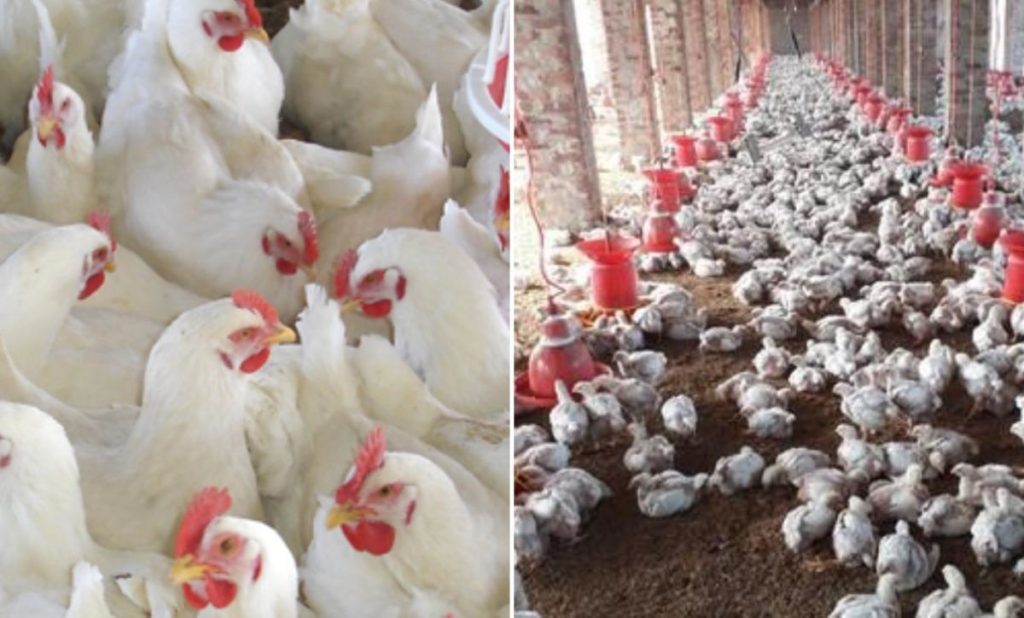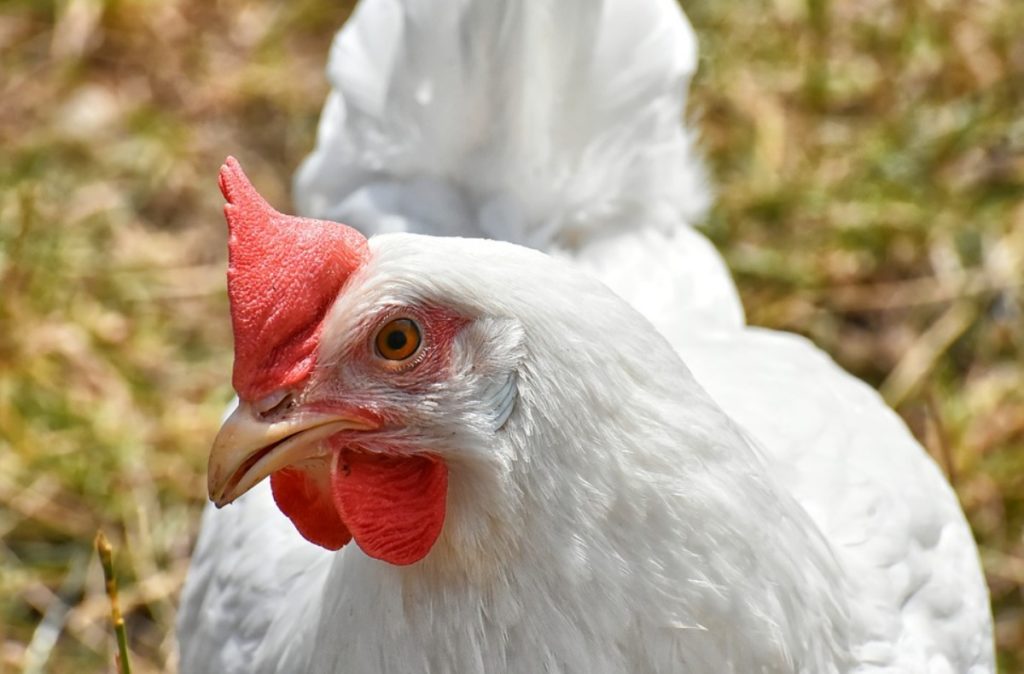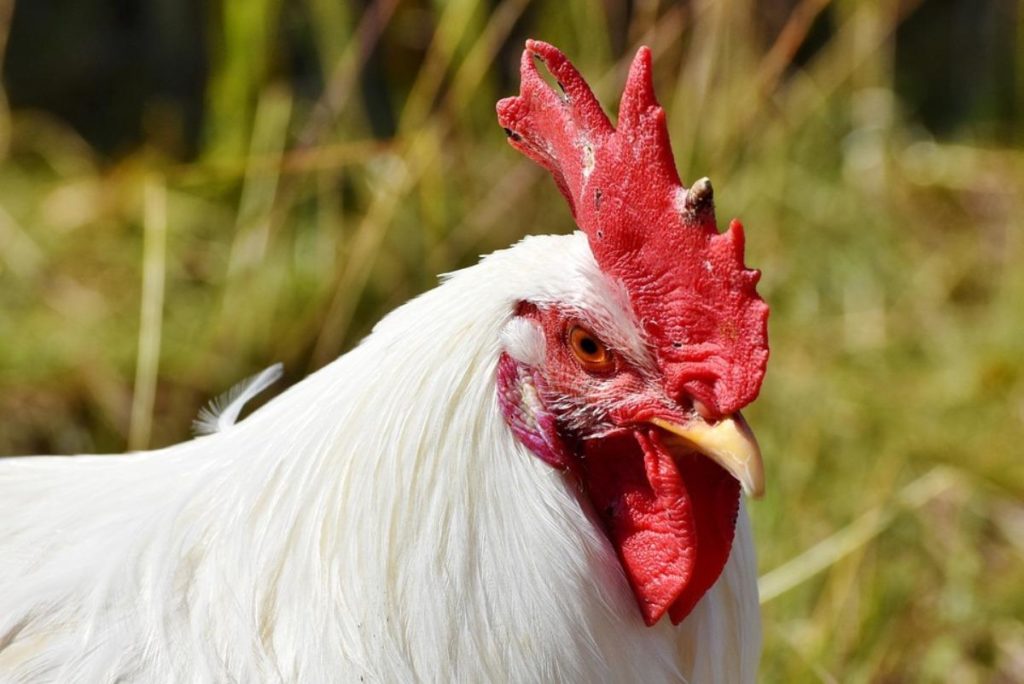Introduction: Hello poultry farmers today we are here with a great information of starting a Broiler chicken farm business in India. Broiler chicken farming is one of the most profitable livestock businesses in India. Broiler chicken farming can be done in small scale poultry farms to large industrial broiler farms.
Broiler chicken farm is the most popular bird in poultry farming in India. Broilers are small chickens that are 5 to 6 weeks old. They are tender with flexible bones. Broiler farming needs very little investment since it can be grown and marketed within 6 weeks.
A guide to starting a broiler chicken farm in India
Broilers today has emerged as the fastest-growing segment for the poultry industry with the increased acceptance of chicken meat in city, villages, the demand for broiler is growing at a fast pace.
During the last few decades, poultry farming has taken a quantum leap from a backyard venture into a growing sector. To get the maximum benefit from this industry, a good knowledge of its technicality that is breed, housing, feeding, management, etc is essential. what are we waiting for? let us get into the details of starting a Broiler chicken farm business in India for maximum profits

Broiler chicken breeds
Since broiler chicken breeds are reared chiefly for meat purposes they are divided into two categories;
- Commercial broiler breeds
- Dual-purpose broiler breeds
Commercial broiler chicken breeds
They are reared for the chicken meat alone and are slaughtered when they attain 6 to 8 weeks of age. There are genetically modified commercial broiler breeds obtainable. These are modified genetically to generate meat rather than egg. Such commercial broiler breeds have increased meat production and a higher conversion rate.
You should not miss the Biofloc Technology in Aquaculture.
Some examples of commercial broiler chicken breeds are Hubbard, Cobb, Caribro, Avian, Krishibro, Babcobb, Varna, Vencobb, Color broiler, Hy-cobb, etc.
Dual-purpose broiler chicken breeds
Dual-purpose broiler breeds are reared for both eggs and meat. They are normally the ‘backyard’ variety. They are self-reliant, hardy and have a very larger body. The eggs they lay have a brown-colored shell.
Some examples of Dual-purpose broiler breed are Rhode Island Red, New Hampshire, White Plymouth Rock, Gramapriya, Kuroiler Dual, Red Vanaraja, and Kalinga Brown, etc.
Required housing facilities for starting a Broiler chicken farm
The housing facilities for poultry should be situated away from the industrial area, yet have good accessibility such as good roads, markets, etc. Basic facilities like clean drinking water should be available. The hen coop or the houses should be constructed at an elevation so that there is no water logging during heavy rains. There must an adequate amount of ventilation, sunlight, and shade.
The fresh air should pass through the brooder shed, grower shed and layer shed precisely in that order. This could prevent the spread of diseases from layers to the brooder. Storerooms, administration offices, etc. should be located at the entrance of the housing facility to minimize the movement of people around the sheds. Similarly, sick room and disposal pits should be located at the end.
Below are the parameters to be taken care of for better housing and management;
How to select a site for starting a Broiler chicken farm
- Sufficient area of land.
- Good water supply.
- Preferably higher land to avoid waterlogging.
- Considerably far from housing estates and human activities.
- Good road connection for easy transportation.
- Market access for procurement of inputs and selling of farm produces.
How to design poultry house when starting a Broiler chicken farm
- Good ventilation.
- The space requirement will be 1 sq ft/bird in the deep litter system.
- Lengthwise direction – east to west.
Broiler chickens require sufficient space for them to grow well, they should not be crowded, otherwise, they may suffocate to death and that will lead to a loss in your poultry farming business. Each broiler chicken needs about 0.1 square meters of floor space. This translates to 10 hens per square meter. So the size of the poultry house will mainly depend on the number of birds to be reared.
Lighting requirement for Broiler chicken farm
Broiler houses are recommended to give 24 hours of light during the brooding time. The pattern followed is 23 hours of light by an hour of darkness every day until they are ready for marketing. The one-hour darkness is to acclimatize the birds towards darkness in case there is power failure also there may be panic and stampede.
Deep litter management in Broiler chicken farming
- Litter materials must be sawed dust, rice husk, chopped wheat straw, etc depending upon availability.
- Fresh litter must be used for rearing pullets and new batches of birds.
- To avoid the caking of litter due to the high moisture level, the humidity of the house must be maintained along with the regular stirring of litter.
You may also like the Horse gram Cultivation Income, Yield, Project Report.
Broiler farming management and rearing systems
The farming systems of rearing refer to either single batch at a time (all-in all-out system) or multiple batches of brooding and rearing of broilers.

Since broilers are reared for meat systematic, well-planned broiler management is necessary to obtain the desired results. Rearing is followed in different methods. They might be reared as a single batch or in multiple batches of brooding and rearing of broilers.
Single Batch – It is also called an ‘all-in-all-out’ system; the farm has only one batch of broilers being reared at a given time. In other terms, the chicks would belong to the same hatch. They are purchased as per the chicken farm capacity, reared and marketed in one single lot. It is a more planned system as there is one batch of birds all belonging to the same hatch to be dealt with at one single time. It reduces the chances of developing infections or the spread of disease. The mortality rate is reduced as the feed conversion and growth rate is enhanced and more efficient. This system is however only appropriate for a small poultry farm. It is not appropriate for a large farm with higher capital.
This system is more hygienic, lesser sub-clinical infections and horizontal spreading of diseases and thereby lesser mortality rate, better growth rate, and feed efficiency. Though this system is not suitable for large scale farming and needs higher fixed and working capital per bird.
Multiple Batch – As the name suggests, more than one batch of chicks belongs to a different phase of hatching are reared. The batch interval varies from one to four weeks. The farmers buy day-old chicks and rear them for up to 5 to 6 weeks before marketing them. While they buy the chicks, they also sell broilers that maybe 5 to 6 weeks. They are sold when they attain the preferred body weight. The time interval between two batches maybe 2 to 4 weeks. They are normally sold in direct retail marketing. Birds of 45 to 50 days of age who are healthy and have attained the desired body weight are sold. Though heavier birds are sold early, the weaker ones are reared for a longer period to let them compensate for the body weight.
Farm equipment in broiler houses
The most commonly used pieces of farm equipment in broiler houses are feeders, drinkers, and brooders together with chick guards, crates and weighing scales. Flame guns and other cleaning equipment are used.
Feeders are the main devices used to hold the feed. They can be conventional, semi-automatic or fully automatic. They can be linear or circular, and they made of metal or plastic. Sufficient feeding space per bird has to be provided by depending on their age.
Broiler chicken feed and nutrition
As feed is the main cost of poultry production which significantly affects the production performance of the birds. So feed and feeding is the main important consideration for efficient poultry farming. Improper feeding not only affects production performance but causes several deficiency diseases.
Also, the feed needs to have all the nutrients that are carbohydrates, protein, fats, minerals & vitamins in the right proportion. Also, some additives to facilitate digestion and growth are often added in reputed commercial feed.
To be profitable in the poultry farming business, you have to minimize the costs, as well as optimize the target weight of the broiler chickens. Broiler chicken stock feeds are formulated to give the protein, energy, vitamins and other nutrients essential for the health and efficient growth of the birds. Just like with day-old chicks, the type of broiler poultry feeds you choose will have a great impact on the profitability of poultry farming business.
You may be interested in Organic Vegetable Farming Income.
Most broiler chickens are sold to the market when they are 6 weeks old. Every bird will consume about 4 Kg of feed from 0 to 6 weeks. At this age, they will have an average of 2.2 to 2.5 KG. The broiler chickens are given a specific kind of feed depending on the stage of production.
There are three types of broiler poultry feeds, which are Starter feeds, Grower feeds, and Finisher feeds. The chickens require enough water for efficient growth. You will need a broiler stress pack/vitamin supplements that can be used to promote the growth of commercial broilers and chicks. And also to combat stress during periods of high temperature, after vaccination and as an aid in recovery from disease to boost the performance of the stock. All the feed costs must be included in your poultry farming business plan.
Cage rearing of broilers
Broilers can also be reared on cages and these are similar to that of grower cages. To prevent breast blisters, the bottom of the cage can be coated with some plastic materials. The floor space requirement in cages is 50% of the floor space required in deep-litter. The advantages of cage rearing of broilers are,
- The higher density of rearing possible
- Easy to catch the birds at a market time and thus reduces bruising
- No expenditure on litter
- Reduced cannibalism
- Cleaning and disinfection easier
- Better growth and feed efficiency
Water for broiler chicks
Broiler chicks require access to fresh water at all times. You can give fresh water using a poultry waterer that has a reservoir for the water and a pan for the birds to drink out of. These waterers are gravity fed and as the chicks drink the water, more water fills the pan from the reservoir.
Broiler industry in India
Chicken in several forms has always been a dish to relish among most Indians. Widely accepted and consumed, the demand for chicken is increasing.
The Broiler segment in India has always grown and is currently estimated to grow to Rs 12,500 crores. Also, India’s Ministry of Agriculture estimates the production value at 2.3 million tones. In a country like India, due to a lack of religious associations, the demand for broiler products is growing speedily. Translated, this gives great potential for success and growth in the poultry industry.
Diseases of Broiler chickens
Broilers suffer from heart attacks and a condition called ascites that can be related to feeding. These birds convert two pounds of feed into one pound of weight and grow so quickly that it can be stressful on the broiler birds systems. Ascites is congestive heart failure where fluids build up and cause high blood pressure in the chick.
Veterinarians recommend that to prevent ascites, you must remove the food at night to slow down the growth rate. Another way is to only feed 90 percent of the total food the birds are proficient in eating every day. Eliminating supplement feedings can help as well.
Advantages of Broiler chicken farming

- Rearing period lasts up to 6 weeks.
- Low initial investment.
- Their feed conversion efficiency is very high which means the amount of feed required for body weight gain is much lower.
- Demand for poultry meat is higher than goat or sheep meat.
- The investment returns are faster since the rearing period is only 6 weeks.
- Demand for poultry meat is more compared to sheep or goat meat.
The disadvantages of Broiler farming
- Broilers are reared normally in cages resulting in cage weakness.
- Cages under dense conditions can effect in lack of air circulation.
- Birds would suffer from the fatty liver syndrome, and leg problems, etc.
Sanction of bank loan and disbursement
After ensuring technical feasibility and financial viability, the loan is sanctioned by the bank. The loan is disbursed mostly in 2 stages. They are the construction of sheds or other civil structures, purchase of equipment and machinery, recurring cost on purchase of chicks, feeds, medicines, etc. The end use of the loan is verified and constantly follows up or monitoring is done by the bank.
Interest Rate – Banks are free to decide the interest rates within RBI guidelines. Though, for working out financial viability and bankability of model projects, the rate of interest is assumed at 12.50% p.a. Security will be as per RBI or NABARD guidelines issued from time to time.
The loan repayment is determined, based on gross surplus produce in the project. Usually, the repayment period of loan for broiler chicken farming is 6 to 8 years. That’s all folks about starting a Broiler Chicken Farm Business in India.
You may be interested in Ground Cover Plants in India.
thankyou